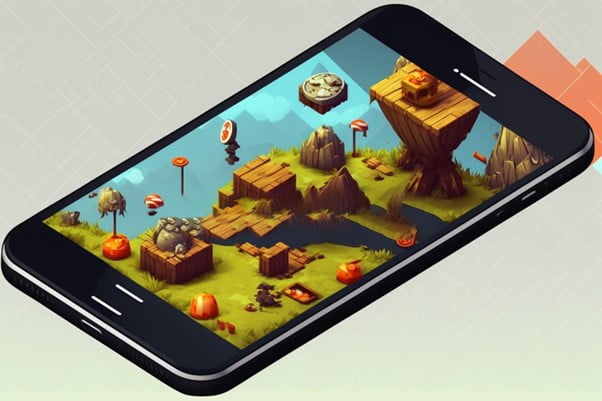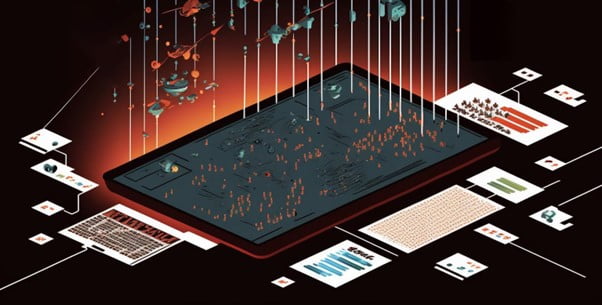We have discussed the compelling role that data analytics plays in various industries. In December, we shared five key ways that data analytics can help businesses grow.
The gaming industry is among those most affected by breakthroughs in data analytics. A growing number of gaming developers are utilizing big data to make their content more engaging. It is no wonder these companies are leveraging big data, since gamers produce over 50 terabytes of data a day.
How is Big Data Changing the Gaming Industry?
In the modern gaming industry, creating a successful mobile or social project is possible only by processing large amounts of information. Many tools are used to design and support products, write marketing strategies, and monetize game analytics: there can be several within a single project, depending on the goal.
In the era of the development of computer games, it is difficult to imagine the number of specialists working on the final product — developers, designers, artists, screenwriters, producers, and other specialists. But besides the fact that the game needs to be invented and developed, it must be successfully sold and analyzed. But what to do with all this information, and how to make a good game? Let’s figure it out.

Analyze → Adapt → Improve
Games for consoles, computers, and phones are the same product as clothes or cosmetics. Customers buy or download a game, and if the quality of the game doesn’t satisfy them, the position and popularity of the product start to sag. In this case, developers involve game analysts and experts in the gaming industry. They test the product and find bugs that turn customers away. Game analysts are exclusively engaged in testing and reporting, and the elimination of identified problems falls on the shoulders of the development team.
But does the work of such departments affect the quality? Absolutely. Let’s give an example of the popular MOBA League of Legends (both mobile and PC versions, it doesn’t matter), where the hero’s popularity depends entirely on promotion. Popularity can be accumulated due to the character’s appearance. Thanks to this, the company makes a profit by selling beautiful skins on frankly unattractive characters (to compensate for all flaws) and on female characters beloved by everyone, adding vibe and anime style.
The work of female concept artists is much more complicated than it seems in this case because modern requirements for creating characters are pretty high: appearance, mood, history, the possibility of monetization through the purchase of skins, cultural characteristics, etc., this is just a short list of what they have to deal with. Often, such specialists can also suggest how to design a mobile game correctly for more accurate analytics.
Gaming data analytics, in this case, will evaluate all indicators of the activity of the character and the players. This is just one of the many ways that advances in gaming analytics have led to the development of better gaming products. Having collected big data, analysts will make a report, the result of which can be a reason for a minor update or a huge patch, which will focus on all aspects of the game, among which there will be gamers’ experience, profit, opportunities for future updates and game development.
Features of Video Game Data Analytics

Since we have touched on such important actors in the game dev field, it will be in the right place to remind us of what they do. After all, analytics is not just looking at statistics and reading player reviews. Video game data analytics involves the collection and gameplay analytics that allows one to understand the game’s problems and make a forecast of its development. The specialist’s responsibilities are:
- Key metrics analysis. The analyst selects priority categories that are constantly monitored: the importance is determined by the genre of the game, the type of monetization, and other project characteristics.
- Data integrity control. The tasks of a game analyst include searching and analyzing the found anomalies and identifying the actual cause of the problems. This is an important point because unpredictable difficulties can appear due to the imperfection of the metrics or be the result of the underdevelopment of the game.
- Creation and control of event funnels. The analyst’s task is to analyze in-game events and track their success/popularity based on the indicators of emotions and monetization.
- Creation of hypotheses and their testing. Gaming data analytics should constantly be looking for project improvements. They study the gameplay, internal economy, balance, and mechanics, offering their improvements to increase attendance, increase emotionality, and, as a result, increase profits. A/B testing is mandatory to check the viability of the idea.
- Formation of competent and understandable reports. The analyst must communicate information to marketers, producers, and game designers in such a way that they understand the problem and support the proposed strategy for fixing it.
How to make a mobile app game? Obviously it’s impossible to do without a game data analyst. Well, and most importantly, analytics allows for quickly finding the reasons that force users to leave the game, identifying a risk group, and developing strategies to keep players based on the information recorded in daily reports.

Gaming Experience: Video Game Big Data Collection and Analytics Value
The gaming experience is what all gamers, game studios, and ordinary consumers hear. Many of us wondered why certain features are added to the game that have yet to be mentioned or asked for. Agree, sometimes patches in games look illogical, but there is an answer to this. Game analytics is a job related to numbers and their analysis because it takes most specialists’ time. They have a set of video game big data metrics that require analysis, and above all, this applies directly to the gameplay and the internal economy. The analyst finds out how long the game session takes, how fast the user goes through the stages and consumes the content (and what kind of content).
Based on this, the result of a patch, event, or even a game after a beta test can be targeted at a specific audience of gamers, for example, players of a certain region where the game is more popular, the age and gender of the players, the OS of the device and, of course, financial opportunities.
Those gamers who buy game services, skins, or donate to the game occupy the first place in the community hierarchy. But not all studios are so mercantile about gamers, and no one forgets about f2p gamers and provides full access to the content without special restrictions. But it would be a mistake not to mention that thanks to content monetization, many studios have succeeded, and some continue their activities.
Data Bigger Than We Think
There is no doubt that data analytics is changing the state of the gaming industry. A game analyst can determine almost any outcome by analyzing players’ behavior. Modern games cannot adapt without an analytical department because they are the core of the progression of any project.
Those who want to make a mobile game should understand that despite all the ideas and originality of the product, the last word will always be with gamers who need not only to be hooked by commercials but also to be kept inside the world they have entered. It isn’t easy to process huge data streams, and only neural networks can read all the information, but their effectiveness has not yet been proven. Therefore the activity of video game data analytics will always be a priority aspect of game development.
But even perfect data can’t produce the perfect decision because the result will always be unpredictable.











